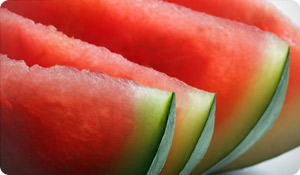
After you eat, your blood sugar (glucose) levels rise. This signals the need for insulin to be released into the blood to carry that sugar to individual body cells where they will be used for energy production and other activities. The amount and type of food you eat can have a dramatic effect on your blood sugar levels.
The glycemic index (GI) is a numeric scale that compares the effect of eating various carbohydrates on your blood sugar to the effect of eating pure sugar (glucose), which will dramatically raise your blood sugar levels. Pure sugar has a GI value of 100. Foods with a GI value of 100 or more are considered very high GI foods that can raise your blood sugar levels just as quickly as pure sugar. Some of these foods include white bread, bagels, croissants, doughnuts, potatoes, hard candies, and many common types of crackers and ready-to-eat cereals.
Foods with a GI value between 70 and 100 are considered high GI foods. A moderate GI food falls between 55 and 70. A value of 55 or less indicates a low GI food. Almost all fruits and fruit juices are rated low to moderate on the GI list. That's because the primary natural sugar in fruit is fructose, which has a GI of 27, the lowest of all sugars.
A high-GI food raises blood sugar higher and more quickly than a low-GI food. The higher the spikes in blood sugar, the more insulin is produced. Over time, excess insulin production can lead to inflammation, weight gain, and a condition known as insulin resistance, which can progress to type II diabetes. However, the GI value of a food changes when it is eaten with other foods, and high GI foods normally have a lower value when eaten as part of a meal or snack that includes several different types of food.
From highest to lowest, here are GI values for 20 common fruits and fruit juices. Keep in mind that since there are often many varieties of a particular fruit, and fruit can take different forms-fresh, frozen, canned, dried, and juiced-each type will have a different GI value. For instance, GI values for bananas range from 30 to 62 and the GI for orange juice from 46 to 57, depending on the varieties of oranges used and whether the juice is fresh or reconstituted. All fruit is good for you, especially fresh, whole fruit, and it is wise to eat a wide variety. But since fruit is often eaten on its own, the range of values within this one food group may be significant if you are concerned about sugar in your diet.
| Fruit | Glycemic Index | Fruit | Glycemic Index |
| Watermelon | 72 | Banana | 49 |
| Cantaloupe | 70 | Orange | 48 |
| Cranberry Juice Cocktail (sweetened) | 68 | Orange Juice | 46 |
| Pineapple | 66 | Strawberries | 40 |
| Raisins | 64 | Apple Juice | 37 |
| Mango | 60 | Apple | 36 |
| Kiwi | 58 | Pear | 36 |
| Peach | 56 | Apricot, raw | 34 |
| Raisins | 54 | Apricots, dried | 32 |
| Blueberries | 53 | Grapefruit | 25 |
Sources:
University of Wisconsin Extension: Glycemic Index
http://74.125.93.132/search?q=cache%3A313Y9vxR4DQJ%3Awww.uwex.edu%2Fces%2Fflp%2Fconference%2Fhandouts%2FRakel_GLYCEMIC%2520INDEX.pdf+site%3A.edu+glycemic+index+fruits&hl=en&gl=us
Harvard School of Public Health: The Nutrition Source: Carbohydrates
http://www.hsph.harvard.edu/nutritionsource/what-should-you-eat/carbohydrates-full-story/index.html#glycemic-index
Jerry Sobieraj, MD, Boston Medical Center
http://people.bu.edu/sobieraj/nutrition/gi.html
Glycemic Index Foundation (searchable database)
http://www.glycemicindex.com/





